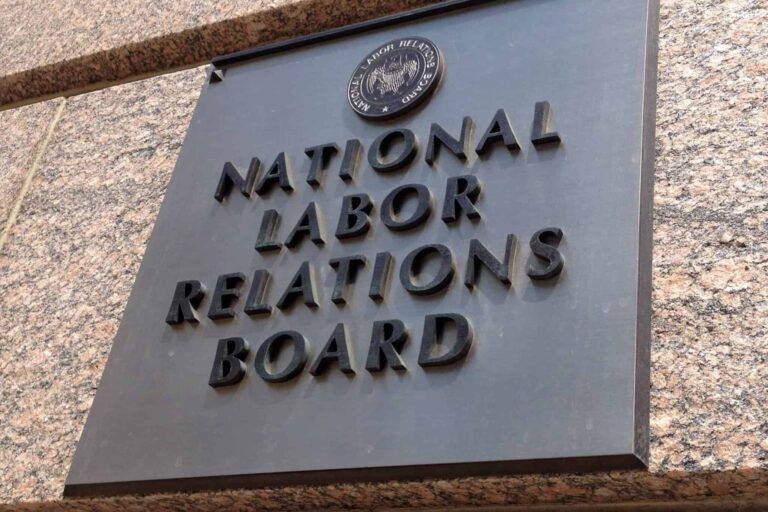
Tascha Shahriari-Parsa is a government lawyer enforcing workers’ rights laws. He clerked on the Supreme Court of California after graduating from Harvard Law School in 2024. His writing on this blog reflects his personal views only.
Last week, in Cemex Construction Materials Pacific, LLC, the NLRB announced a new framework for remedial bargaining orders. From now on, if an employer “refus[es] to recognize, upon request, a union that has been designated” by a majority of employees as their bargaining representative (such as through card check), the Board will issue a bargaining order unless the employer promptly petitions for an election and avoids committing unfair labor practices that require setting the election aside.
As I explained on Saturday, Cemex brings much-needed change. Employers can no longer insist on an election while undermining employees’ right to have that election be free and fair.
Inevitably, some will argue that Cemex goes too far. But under a faithful reading of the NLRA, it doesn’t go far enough.
The Board’s new standard falls short in two key ways. It erroneously maintains an employer’s right to insist on an election. And it leaves untouched a flawed Board precedent that eliminated an important remedial tool: the nonmajority bargaining order.
The employer’s right to insist on an election
Cemex suggests that employers are entitled “to invoke the Board’s election machinery” even where the union has clearly obtained a card majority. But this entitlement rests on a questionable interpretation of the NLRA.
Section 8(a)(5) establishes a duty for employers to bargain with “the representatives of his employees, subject to the provisions of section 9(a).” Section 9(a), in turn, provides that “[r]epresentatives designated or selectedfor the purposes of collective bargaining by the majority of employees” are to be their “exclusive representatives.” These sections do not prescribe specific procedures, let alone Board-supervised elections, through which employees must designate their representatives.
Consider further that the Board and courts have long upheld employers’ voluntary recognition of unions through card check. But either card check is sufficient for employees to “designate[]” their representative, or it is not; there is no room in section 9(a) for the employer to decide what qualifies as “designat[ion].”
Lastly, section 9(c)(1)(B) grants employers the right to petition for an election. The Board will “investigate” the employer’s petition. Then, if the Board “has reasonable cause to believe” that a question of representation exists, it must conduct a hearing to determine whether the question of representation actually exists. Finally, if there is a question, the Board must order an election.
For decades, the Board has held that there is a “question” of representation anytime the employer challenges the union’s demand for recognition, so long as it files a proper petition. But if all the employer had to do was file a proper petition, why would the NLRA set out such a detailed process? And why wouldn’t it say “that a proper petition has been filed” instead of “that a question of representation…exists”?
The better reading of section 9(c)(1)(B) is that if there is no evidence that the union’s card majority was improperly obtained, there is no question of representation—there is representation—and the employer has no statutory right to a Board election.
Indeed, as the Supreme Court has acknowledged, section 9(c)(1)(B) was meant to address a specific circumstance noted by Senator Taft: “A man comes into [an employer’s] office and,” without evidence, “says, ‘I represent your employees.’” 9(c)(1)(B) allows that employer to “go to the Board” and inquire “who is the bargaining agent for my employees.’” But where the union does present convincing evidence of its majority status, the amendment left unchanged the existing law: that the employer cannot refuse to bargain or insist on an election.
Still, some have expressed worries that, without an employer right to demand an election, employees could fully unionize in secret. Employers would thus be deprived of any opportunity to provide candid information to employees that could help them make an informed decision.
But this objection imagines a problem where none exists, because workers would still be able to ask their employer for their opinion on unionization. And where they choose not to, the employer has no cause for complaint. Under a regime where unions have no right to address statements by employers discouraging unionization, there is no principled basis for avoiding the clear text of the NLRA to give employers an exceptional right to respond to union campaigns.
Ultimately, the Act protects employees’ free choice, not employers’. And that employee free choice does not come with an employer right to determine how employees designate their representative.
Nonmajority bargaining orders
Cemex correctly recognizes that its new standard for remedial bargaining orders will “deter employer misbehavior in the period before a Board election.” But that’s not the only period that counts. Even after Cemex, employers are incentivized to strike early—to discharge the first organizer, to threaten plant closure upon first mention of unions—thereby preventing the union from having a chance at majority status in the first place.
The solution? The Supreme Court has suggested that, in exceptional cases where “a fair and reliable election cannot be had,” bargaining orders are a legitimate remedy—even without proof of majority support. Yet since its 1984 decision in Gourmet Foods, the Board has refused to issue such “nonmajority bargaining orders” (NBOs).
The Gourmet Foods Board concluded that, notwithstanding that dicta and the Board’s broad remedial authority, the principle of majority rule is “a direct limitation on the Board’s existing statutory remedial authority” that precludes any authority to issue NBOs.
The text of the NLRA does not contain any prohibition on NBOs. Gourmet Foods grounded the prohibition in the legislative history of the Wagner Act, which might support the idea that the Act is grounded in a principle of majority rule. But a closer look at that history makes clear that Congress believed majority rule was necessary to prevent employers from insisting on its right to bargain with minority factions as a way to “confuse and divide the workers.” There is no evidence that Congress was worried about the Board’s power to issue NBOs.
If anything, respect for the concern that animated the NLRA’s adoption of majority rule—to avoid giving employers a legal loophole to frustrate workers’ right to collectively bargain—requiresthe Board’s power to issue NBOs. Because without them, employers are empowered to break the law early on in a campaign and thereby frustrate workers’ right to self-determination.
Even if the principle of majority rule is no barrier, employee free choice might be. NBOs risk imposing union status on unwilling majorities. But the status quo also imposes nonunion status on unwilling majorities of workers who, absent their employer’s unlawful interference, would have unionized. And regardless, the Board can maximize employee free choice by combining the NBO with a waiver of the contract bar—the Board’s usual three-year moratorium on decertification petitions following the signing of a collective bargaining agreement.
* * *
Cemex ambitiously set out to reform the Board’s remedial bargaining regime. It will make it harder for employers to get away with breaking labor law, and easier for employees to freely choose whether to join a union. But when opponents argue that Cemex is an abuse of the Board’s discretion, I might agree—not because the Board did too much, but because there is still more that the Board ought to do to fulfill its statutory mandate.










Daily News & Commentary
Start your day with our roundup of the latest labor developments. See all
November 28
Lawsuit against EEOC for failure to investigate disparate-impact claims dismissed; DHS to end TPS for Haiti; Appeal of Cemex decision in Ninth Circuit may soon resume
November 27
Amazon wins preliminary injunction against New York’s private sector bargaining law; ALJs resume decisions; and the CFPB intends to make unilateral changes without bargaining.
November 26
In today’s news and commentary, NLRB lawyers urge the 3rd Circuit to follow recent district court cases that declined to enjoin Board proceedings; the percentage of unemployed Americans with a college degree reaches its highest level since tracking began in 1992; and a member of the House proposes a bill that would require secret ballot […]
November 25
In today’s news and commentary, OSHA fines Taylor Foods, Santa Fe raises their living wage, and a date is set for a Senate committee to consider Trump’s NLRB nominee. OSHA has issued an approximately $1.1 million dollar fine to Taylor Farms New Jersey, a subsidiary of Taylor Fresh Foods, after identifying repeated and serious safety […]
November 24
Labor leaders criticize tariffs; White House cancels jobs report; and student organizers launch chaperone program for noncitizens.
November 23
Workers at the Southeastern Pennsylvania Transportation Authority vote to authorize a strike; Washington State legislators consider a bill empowering public employees to bargain over workplace AI implementation; and University of California workers engage in a two-day strike.